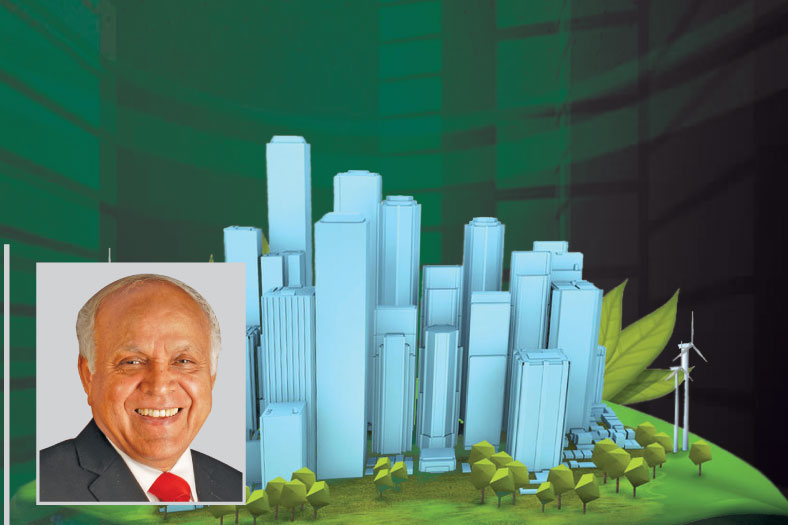James Law – The Cybertect

In India, there is a lot of opportunity to put cybertecture right into the heart of planning and designing new towns and cities.
Ar James Law, Chairman & CEO, James Law Cybertecture
In an interview with Zaid Lakdawala, Hong Kong based Cybertect James Law shares his unique perspective on today’s building designing. He also talks on why India needs to modernise its construction process.
How technology is transforming the construction industry?
For years, the way which we build our buildings in the construction industry has always been very labour intensive. New technology is helping us to build a building using robust technology not on the site but in a factory. We have everything from prefab to mobile pod unit which are able to carve a building. This is changing the construction industry landscape through integration of all building components using advanced tools. Though India is little late to adopt this technology, we are optimistic about its future.
Could you name the greatest breakthrough construction technology of today?
It’s hard to put my figure on one particular technology as breakthrough technology. I would say there are two technologies: Building Information Modelling (BIM) and Virtual Reality. BIM allows us to build an entire building in our boardroom whereas Virtual Reality helps to experience a building and its services even before it is conceptualised.
How has this technology added value to your profession?
I have been trained as an architect and called myself a Cybertect because earlier architects was all about creating design using pen, paper, pencil and tracing paper. Now a modern day architect is using Computer Aided Design (CAD), Autocad, Virtual Reality, 3D printing and 3D scanning. The next generation of architects will have access to more advanced technologies.
Technology has changed the way a building is being designed today. It has enhanced our efficiency in terms of handling complex projects. We are empowered to deal with complex shapes and geometrics using advanced tools which were not possible to design manually. Further, we are moving towards artificial intelligence where a building will be designed taking inspiration from people and technology will help to make it in to reality.
Have you started adopting such technologies in your projects?
We have a passion for using technology. In our firm we always try to use the right and latest tools and that starts right at the beginning of a project depending upon the requirement. For example, we have just finished the designing of a cinema in Hong Kong and we have used 3D modelling, 3D printing and Virtual Reality extensively in this project because everything in this structure is made of wood.
What are the futuristic projects you are doing in India?
We are currently doing a number of residential projects in Mumbai which include Rustomjee Elements at Juhu, Tridhaatu Aranya at Chembur and Convention Centre behind Bandra-Kurla Complex. All of these projects are innovative. For example, the tower in Chembur actually looks like a tree and from far it looks like a mountain because it is build on the mountain side. It is a residential building with a very ecological and green design integrated.
How do you see the acceptance of cybertecture in India?
We feel lucky as the concept has already been accepted. We are just at the cusp of huge technological revolution as far as Indian construction industry is concerned. India is a very fascinating market for cybertecture as the country really wants to modernise and wants to integrate advanced architecture in designing. Here cities are growing and they need to be designed into smart cities. So, in India, there is a lot of opportunity to put cybertecture right into the heart of planning and designing new towns and cities.
Young architects and students are very fascinated to be a part of this movement to create pieces of cybertecture. India has all the potential to lead the world, not just copy the world.
33
Cookie Consent
We use cookies to personalize your experience. By continuing to visit this website you agree to our Terms & Conditions, Privacy Policy and Cookie Policy.






